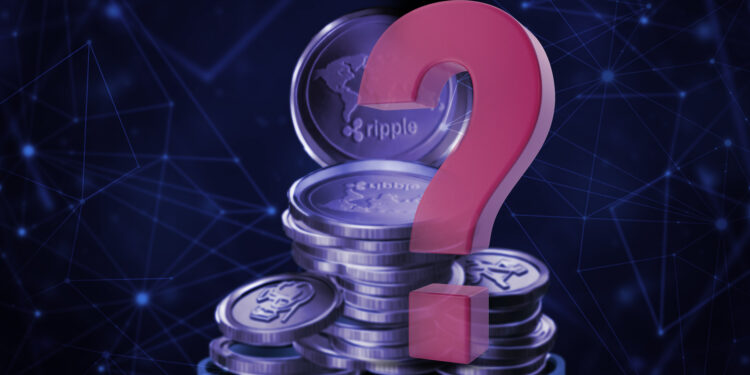It’s clear that DeFi has emerged as a lucrative avenue for individuals seeking to increase their income sources. The diverse range of opportunities within DeFi, such as staking, borrowing, lending, and airdrop farming, has attracted many investors seeking a way to earn more with their funds with little effort. Crypto projects, in a bid to capitalize on this trend, have introduced “reflection tokens” as a novel method for earning passive income within the DeFi ecosystem.
Reflection tokens are newer avenues for passive income for investors and, at the same time, a mechanism to guarantee the long-term stability of crypto projects.
They achieve this through smart contracts and a fee structure that automatically rewards investors. This innovative approach has led to the adoption of reflection mechanisms by many new DeFi projects with the aim of attracting a broader investor base.
This article explores reflection tokens, provides insights into how they operate and highlights some noteworthy examples of projects that use them.
How Do Reflection Tokens Work?
Reflection tokens, or reflective tokens, are types of cryptocurrencies that allow the holders to earn more tokens without the need for mining or staking. Instead, these rewards are given automatically to holders based on their token balance, appearing directly in their wallets.
The passive earning mechanism of the reflection tokens, commonly known as “reflection,” operates via a “transaction tax.” The idea behind the “transaction tax” is that a modest fee is deducted from every transaction, be it buying or selling, conducted with the token. The modest fee is usually a set percentage of the value of the token used in the transaction.
To illustrate, for a reflection with a 10% transaction tax, if you buy a token/product, 10% of the amount of the reflection token you used will be deducted from your balance.
This tax is then distributed among all token holders, with those possessing more tokens receiving a larger share. The fees are typically distributed in the form of additional tokens, automatically appearing in the holders’ wallets.
This whole process, deduction and distribution, is automatically carried out by smart contracts, so it is not susceptible to tampering by project developers.
This approach serves as an incentive for individuals to retain their tokens for an extended period, as their token balance increases without the necessity for activities such as staking or mining.
Advantages of Reflection Tokens
Beyond the obvious benefit of passive income generation, reflection tokens offer various benefits to all stakeholders, including both the platform and investors.
One key benefit of the reflection mechanism is the contribution to the project’s and token’s market stability. Investors are not incentivized or required to actively trade, move, stake, or lock up their tokens, so it reduces the likelihood of market fluctuations through constant fund movement.
Additionally, the taxation of transactions further deters constant token movement, fostering increased stability and a more predictable market with fewer abrupt fluctuations. These streamlined transactions also improve the token’s liquidity.
Some projects channel a share of the fees from “transaction tax” into a liquidity pool. This practice enhances the token’s liquidity and contributes to its overall stability. By supporting the liquidity pool, these tokens create a more reliable environment for investors.
As holders accumulate more reflection tokens, the total token supply decreases, and the value of each token increases. Therefore, as more tokens are accumulated, investors benefit from the token’s increased value.
Reflection tokens often foster a strong sense of community among holders. The shared goal of maximizing the “reflection fee” encourages long-term partnerships and a vibrant and engaged investor community. This unity can lead to increased involvement and interaction within the token ecosystem, enhancing the overall experience for all holders.
Disadvantages of Reflection Tokens
While reflection tokens offer substantial benefits, they also come with potential downsides that can impact investment profitability. Let’s explore the associated risks.
- Reduced Earnings in Low Trading Activity
Rewards for reflection token holders are tied to trading activity. High trading volumes can lead to significant gains, but low activity periods may result in decreased earnings for coin holders.
- Transaction Fees
Investors incur transaction fees when buying and selling tokens. Initial purchases of reflection tokens involve fees, causing investors to start with a loss until these fees are recovered. Investing in reflection tokens is advisable as a long-term strategy for potential gains.
- Risk of Fraud
Reflection tokens are traded on decentralized exchanges (DEXs), exposing investors to a higher risk of fraud, including schemes like “rug pulls.” Due to this risk, some investors may choose to limit the size of their initial investments.
The relatively new nature of reflection tokens in the cryptocurrency space may mean that investors are not fully aware of all potential risks. Additionally, the current options for reflection coins are limited in number, contributing to uncertainties.
Examples of Reflection Tokens Projects
Safemoon

Safemoon was among the early reflection tokens in the crypto space. The project now has over 2.5 million holders and over $1 billion fully diluted market cap, according to CoinMarketCap. Safemoon’s smart contract applies a 10% fee on SAFEMOON transactions, with 5% given to investors and the other 5% added to Safemoon’s liquidity pool.
EverGrow Coin (EGC)

EverGrow Coin made a big impact on the BNB Chain by quickly attracting investors with its reflection token system. In just five months, EverGrow Coin has distributed over $38 million in BUSD.
The project implements a 14% tax on EGC transactions, with 8% directed to investors and 6% allocated for liquidity fees. EverGrow Coin doesn’t reward coinholders with its own EGC tokens; instead, it distributes rewards in the stablecoin Binance USD (BUSD).
The platform developers are actively working on new projects, such as Crator, the first crypto-integrated content subscription platform, to offer additional rewards to its dedicated investors.
Reflect Finance (RFI)

RFI is a reflection token project on the Ethereum network. It has a 1% fee on RFI transactions, and this fee gets automatically shared among token holders, with the amount based on each investor’s position. RFI holders can also engage in yield farming or staking with their tokens without affecting RFI positions.
Is Investing in Reflection Token a Good Idea?
Investing in reflection tokens comes with its set of risks and considerations, and whether it’s a good idea depends on various factors. Here are some things to think about when assessing the value of investing in reflection tokens:
- Market Stability: Cryptocurrency markets, including reflection tokens, can be quite unpredictable. Prices can go up and down a lot, leading to both gains and losses. Think about how comfortable you are with this kind of market uncertainty and whether you can handle the ups and downs that come with reflection tokens.
- Token Purpose or Use Case: Consider what the reflection token is meant to do and how useful it is. Does it solve a real-world issue or provide special features? Tokens with a clear purpose and utility beyond just giving back rewards may have better chances for lasting value.
- Tokenonomics and Long-Term Viability: Examine the project’s tokenomics. Think about things like how many tokens there are, how much gets redistributed, and how quickly new tokens are created. A good tokenomics should balance rewarding holders and keeping the token viable over the long run.
- Community Support: Evaluate the strength and engagement of the reflection token’s community. An active and supportive community is crucial to a token’s success. Also, keep an eye on the project’s development work because regular updates and enhancements are also essential.
- Money Goals and Risk Management: Consider what you want to achieve with your investment and how long you’re willing to wait. Are you after quick profits or looking for growth over time?
Reflection tokens may require patience to realize their full benefits, so ensure that your decision to invest in them matches your money goals and what risks you can handle.
In Conclusion
- Reflection tokens can be an enticing investment option for those interested in the cryptocurrency market, provided they take the time to study and understand these tokens.
- Investing in reflection tokens, like any investment, requires careful consideration and thorough research. Look into the whitepaper, the team, the plan, and the security measures in place. Understanding the project is all about is key to making wise investment choices.
Disclaimer: This article is intended solely for informational purposes and should not be considered trading or investment advice. Nothing herein should be construed as financial, legal, or tax advice. Trading or investing in cryptocurrencies carries a considerable risk of financial loss. Always conduct due diligence.
If you would like to read more articles (news reports, market analyses) like this, visit DeFi Planet and follow us on Twitter, LinkedIn, Facebook, Instagram, and CoinMarketCap Community.





















